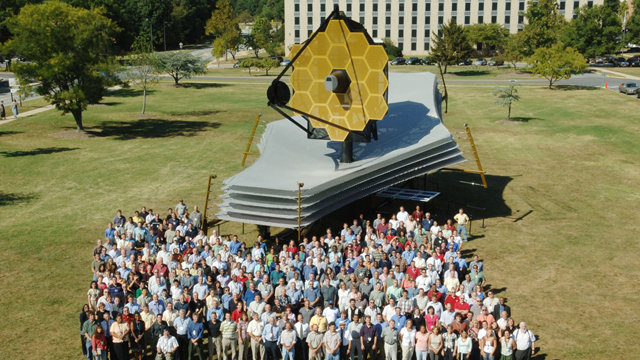For much of the world, Saturday was just another weekend day filled with all of this planet's problems and perils. The Omicron-fueled pandemic raged around the globe. New York emerged from its first snowstorm of the season. Turmoil continued in Kazakhstan and elsewhere
But in space. In space. On Saturday, in space, there was a great triumph.
After a quarter century of effort by tens of thousands of people, more than $10 billion in taxpayer funding, and some 350 deployment mechanisms that had to go just so, the James Webb Space Telescope fully unfurled its wings. The massive spacecraft completed its final deployments and, by God, the process went smoothly.
Thanks to NASA, and space agencies in Europe and Canada, the world has a brilliant new space telescope that will allow humanity to see far further back into the depths of galactic time than ever before, and quite possibly identify the first truly Earth-like worlds around other stars.
I dare say that 99 percent of the world will not know or realize or care to understand the amount of work and engineering and paperwork that went into building, launching, and deploying the James Webb Space Telescope. But those of us who know, we know. And we are in awe.
In something of an understatement after full deployment, NASA's chief of science, Thomas Zurbuchen, said, "This is an amazing milestone."
Serious planning for a successor to the Hubble Space Telescope began in the 1990s, and scientists were keen to see back further, into the early universe. To do this they would need a dark, cold environment far from Earth. This is because to collect light from the most faint, distant objects in the universe requires not just a very large mirror, but also no background interference.
To do this, scientists planned to build a telescope that would make observations in the infrared part of the spectrum, where wavelengths are just a little bit longer than red light. This portion of the spectrum is good both for detecting heat emissions, and such wavelengths are long enough that there's less chance they will be deflected by interstellar dust.
Such a telescope would need to be very cold, however, which is how scientists came to devise a large, tennis-court sized heat shield to block light and heat from the Sun. But because no rocket has a super-large fairing, this heat shield and telescope would necessarily need to be folded like origami to fit within the protective cocoon atop a rocket. Nothing like that had ever been tried before. Building this heat shield, testing it, and ensuring it could be deployed in space required the better part of two decades.
Therefore, while the launch of the Webb telescope on Christmas Day two weeks ago was momentous, it was just the beginning of the end of Webb's journey from concept to science operations. As part of the deployment process, there were 344 actions where a single-point failure could scuttle the telescope. This is a remarkable number of instances without a redundant capability, which is why many of the scientists and engineers I have spoken with in recent years felt that Webb had a pretty good chance of failing once in space.
But now that ultra complex heat shield is working. The temperature on the Sun-facing side of the telescope is 55 degrees Celsius, or a very, very, very hot day in the Sahara desert. And already, the science instruments on the back side of the sunshield have cooled to -199 degrees Celsius, a temperature at which nitrogen is a liquid. They will yet cool further.
Work remains, of course. Webb still must traverse about 370,000 km to reach an orbit around a stable Lagrange point, L2. Scientists and engineers must check out and align the 18 primary mirror segments. Scientific instruments must be calibrated. But all of this work is somewhat more routine when it comes to science spacecraft. There are risks, to be sure, but these are mostly known risks.
We can therefore be reasonably confident now that Webb will, in fact, begin to make science observations this summer. We should, truly, be in awe.



3175x175(CURRENT).thumb.jpg.b05acc060982b36f5891ba728e6d953c.jpg)


Recommended Comments
Join the conversation
You can post now and register later. If you have an account, sign in now to post with your account.
Note: Your post will require moderator approval before it will be visible.